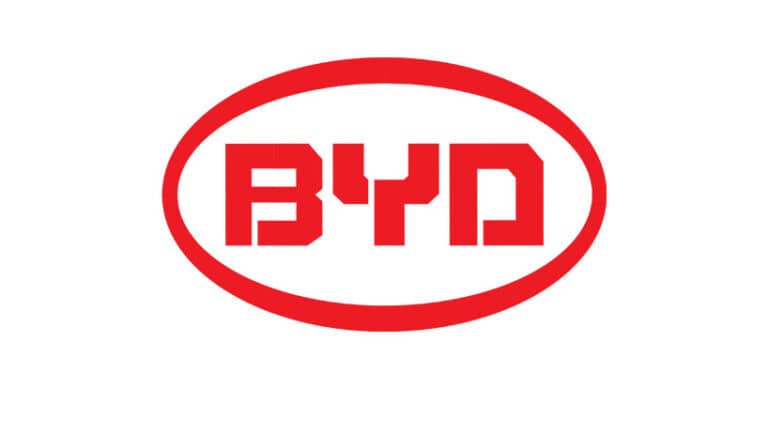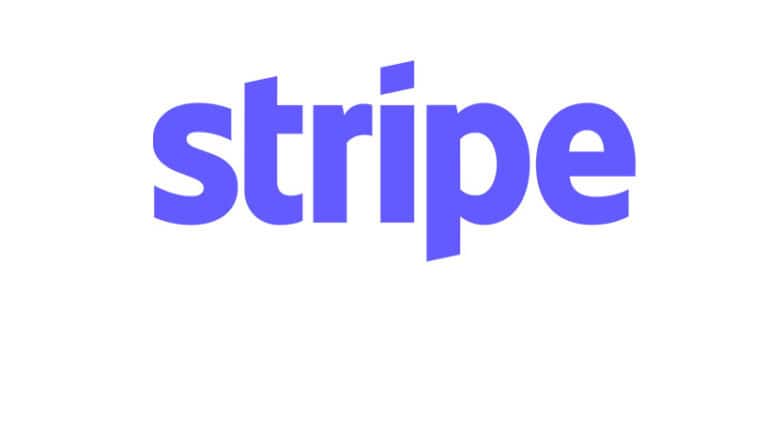1. Introduction
Preparing for a machine learning interview at Microsoft can be challenging, given the company’s reputation as a leader in artificial intelligence and cloud computing. The demand for skilled ML engineers has increased, making it more competitive for aspiring candidates. Microsoft's ML teams work on various impactful projects such as optimizing the Azure cloud services, developing intelligent applications, and creating cutting-edge research in computer vision and natural language processing. That’s why strategic preparation is crucial for acing your Microsoft ML interview.
This blog will guide you through the essential areas you need to focus on while preparing for a Microsoft ML interview. We’ll discuss the interview process, key technical skills, and commonly asked questions. Whether you're an experienced professional or just starting, this detailed guide will help you understand how to navigate the complexities of Microsoft's ML interview process.
2. Understanding Microsoft’s Machine Learning Interview Process
The Microsoft ML interview process is structured into multiple stages, each designed to evaluate a specific set of skills required for the role. Here's a breakdown of the typical process:
Initial Screening (Recruiter Call): The first interaction usually involves a recruiter reaching out to understand your background, skills, and interest in Microsoft. The recruiter will gauge whether your experience aligns with the role's requirements.
Technical Screening (Online Assessment): This stage often involves an online coding assessment or a technical interview. You'll be expected to solve coding problems, typically focusing on algorithms, data structures, and some ML-related challenges.
On-Site or Virtual Interviews:
Technical Rounds: You will face 3-4 technical interviews focusing on coding, ML system design, data science, and ML theory. Expect questions that test your knowledge of algorithms, statistics, and cloud-based ML deployment.
Behavioral Interview: Microsoft places a significant emphasis on cultural fit. This round evaluates your problem-solving approach, collaboration, and alignment with Microsoft’s values.
Final Round (Hiring Manager or Team Lead): This final stage focuses on your overall fit for the team and your long-term potential at Microsoft. It's essential to showcase your past project experience, domain expertise, and familiarity with Microsoft’s tech stack (e.g., Azure).
Key Skills Evaluated:
Coding Proficiency: Proficiency in Python and SQL is crucial, especially for data manipulation and preprocessing.
Machine Learning Theory: In-depth understanding of ML algorithms, feature selection, and model evaluation techniques.
System Design: Experience in designing scalable ML systems and deploying them on cloud platforms like Azure.
Cloud and Distributed Systems: Familiarity with cloud-based solutions and distributed computing (e.g., Azure Databricks, HDInsight).
3. Key Focus Areas in Microsoft Machine Learning Interviews
3.1. Machine Learning Fundamentals and Advanced Algorithms
Microsoft emphasizes a strong grasp of ML theory and algorithms in their interview process. To ace this part, candidates should be well-versed in both fundamental and advanced ML concepts:
Supervised Learning:
Understanding linear and logistic regression, decision trees, support vector machines, and ensemble methods like Random Forests and Gradient Boosting.
Common questions include designing a regression model to predict housing prices or explaining how SVMs work for classification problems.
Unsupervised Learning:
Knowledge of clustering techniques (e.g., k-means, DBSCAN) and dimensionality reduction (PCA, t-SNE).
An example question might involve using PCA to reduce features for a high-dimensional dataset.
Neural Networks and Deep Learning:
Proficiency in neural network architectures like Convolutional Neural Networks (CNNs) for image processing or Recurrent Neural Networks (RNNs) for sequence modeling.
Expect questions on designing deep learning models, selecting appropriate architectures, and troubleshooting overfitting issues.
Reinforcement Learning:
Discussing the fundamentals of Markov Decision Processes (MDPs), Q-learning, and policy gradients.
Real-world applications like optimizing advertisement placements using RL might be explored in interviews.
Evaluation Metrics:
Familiarity with different evaluation metrics for classification (e.g., accuracy, precision, recall, F1-score) and regression (e.g., RMSE, MAE).
Example Interview Question:
Question: Explain the bias-variance tradeoff in machine learning and how you would address it when designing a model.
Answer: The bias-variance tradeoff is the balance between the model's complexity (variance) and its ability to generalize to new data (bias). Increasing the complexity reduces bias but increases variance, and vice versa. Regularization techniques such as L1 or L2 regularization, cross-validation, and adjusting the model’s complexity are effective methods to achieve a balance.
3.2. Data Engineering and Feature Engineering for ML
Microsoft expects candidates to have strong data manipulation and feature engineering skills. This section will test your ability to work with large datasets, transform data, and derive meaningful features.
Data Cleaning and Preprocessing:
Techniques for handling missing data, outliers, and imbalanced datasets.
Use of Python libraries like pandas and numpy for data manipulation.
Feature Engineering:
Feature extraction, creation, and selection using statistical methods like ANOVA or correlation analysis.
Employing domain knowledge to create meaningful features that enhance model performance.
Big Data Handling:
Proficiency in querying and analyzing large datasets using SQL, Azure Databricks, or Hadoop.
Example Interview Question:
Question: How would you approach feature selection for a model predicting customer churn?
Answer: I would first explore the dataset to identify potential features such as customer engagement, transaction history, and support ticket volume. Using techniques like correlation analysis, mutual information, and domain expertise, I’d narrow down the list to the most predictive features. Additionally, I’d consider using automated methods like Recursive Feature Elimination (RFE) for feature selection.
3.3. Cloud-Based Machine Learning with Azure
Azure cloud services are integral to ML projects at Microsoft, making it crucial for candidates to understand its features and functionalities:
Azure Machine Learning Studio:
Building and training models, creating pipelines, and deploying them using Azure ML Studio.
Use of automated machine learning (AutoML) for quick model experimentation and testing.
Azure Databricks and Synapse Analytics:
Handling big data workloads, running distributed machine learning models, and integrating with Azure Data Lake for data storage.
Azure Cognitive Services:
Familiarity with pre-trained models for NLP, computer vision, and speech recognition.
Example Interview Question:
Question: Describe how you would deploy a machine learning model on Azure and monitor its performance.
Answer: I would first package the model using Docker, then create an Azure Container Instance for deployment. Using Azure Machine Learning Studio, I would deploy the model as a web service and enable Application Insights to monitor performance metrics like latency, throughput, and accuracy. I’d set up alerts for drift detection to ensure the model remains robust over time.
3.4. ML System Design and Architecture
System design interviews evaluate your ability to architect scalable and efficient ML solutions. Common topics include designing data pipelines, optimizing training workflows, and deploying models at scale.
Data Pipelines:
Designing pipelines for data ingestion, transformation, and training using Azure Data Factory or Apache Airflow.
Scalability and Cost Optimization:
Choosing the right compute resources and optimizing storage solutions to handle large-scale training workloads.
Example Interview Question:
Question: How would you design a recommendation system for Microsoft’s online store?
Answer: I would first define the problem and key metrics (e.g., click-through rate). The system would leverage user behavior data (e.g., purchase history, browsing patterns) and employ collaborative filtering techniques to recommend products. I’d design the architecture using Azure Data Lake for storage, Azure Databricks for model training, and deploy it using Azure Kubernetes Service for scalability.
3.5. Algorithmic and Data Structures Skills
Algorithmic skills are crucial for tackling ML-specific problems and optimizing model performance. This section often focuses on implementing data structures and solving complex algorithmic challenges.
Tree Structures:
Binary search trees, balanced trees, and applications in ML models like decision trees.
Graph Algorithms:
Breadth-first search, depth-first search, and their use in clustering and recommendation systems.
Example Interview Question:
Question: Implement a binary search algorithm and explain its time complexity.
Answer: Binary search operates on sorted arrays by dividing the search space in half. At each step, it compares the target value with the middle element and narrows the search space accordingly. The time complexity is O(log n) due to this halving approach.
4. Top 20 Microsoft ML Interview Questions with Sample Answers
1. Explain the Bias-Variance Tradeoff in Machine Learning. How would you address it?
Sample Answer:The bias-variance tradeoff refers to the balance between a model’s complexity and its ability to generalize to unseen data. A model with high bias underfits the training data, missing the underlying patterns and leading to poor performance. Conversely, a model with high variance overfits the training data, capturing noise and failing to generalize.To address this tradeoff, I would implement regularization techniques such as L1 or L2 regularization, use cross-validation to tune hyperparameters, and reduce the model’s complexity. Early stopping and ensemble methods like bagging or boosting can also help manage bias and variance effectively.
2. What is the difference between Bagging and Boosting?
Sample Answer:Bagging (Bootstrap Aggregating) and boosting are ensemble methods used to improve model performance. Bagging involves training multiple models independently using randomly sampled subsets of the data and then averaging their predictions to reduce variance. It’s typically used with decision trees, leading to models like Random Forests.Boosting trains models sequentially, where each new model focuses on correcting errors made by previous models, reducing bias. Popular boosting algorithms include AdaBoost and XGBoost. While bagging helps reduce overfitting, boosting improves model accuracy by minimizing errors.
3. How would you evaluate a regression model’s performance?
Sample Answer:Regression models are evaluated using metrics such as Mean Absolute Error (MAE), Mean Squared Error (MSE), Root Mean Squared Error (RMSE), and R-squared. MAE measures the average absolute differences between actual and predicted values, making it less sensitive to outliers. MSE and RMSE penalize larger errors more heavily, making them suitable when large deviations are undesirable. R-squared indicates the proportion of variance in the dependent variable explained by the model.When choosing a metric, I would consider the problem’s context and whether minimizing large errors or overall prediction accuracy is more critical.
4. Explain the concept of Regularization. What are L1 and L2 regularization techniques?
Sample Answer:Regularization is a technique used to prevent overfitting by adding a penalty term to the loss function. It helps keep the model’s weights smaller, thereby simplifying the model.
L1 Regularization (Lasso): Adds the absolute value of the magnitude of coefficients as a penalty term. It can shrink some coefficients to zero, effectively performing feature selection.
L2 Regularization (Ridge): Adds the squared magnitude of coefficients as a penalty term. L2 regularization is better at handling collinear features and generally performs well in reducing overfitting without completely discarding features.
5. Describe how you would approach feature engineering for a classification problem.
Sample Answer:Feature engineering involves creating new features or modifying existing ones to improve model performance. For a classification problem, I would start by understanding the data and domain knowledge. Next, I would:
Create New Features: Based on domain understanding, create interaction features or polynomial features that might be more predictive.
Transform Features: Use techniques like logarithmic transformation or scaling to handle skewed distributions.
Encode Categorical Variables: Use one-hot encoding or label encoding for categorical features.
Select Relevant Features: Apply techniques like feature importance scores, recursive feature elimination, or correlation analysis to select the most predictive features.
6. Explain how a Decision Tree works and its advantages and disadvantages.
Sample Answer:A decision tree splits the data into subsets based on feature values, forming a tree-like structure where each internal node represents a decision, and each leaf node represents an outcome.
Advantages:
Easy to interpret and visualize.
Handles both numerical and categorical data.
Requires minimal data preprocessing (e.g., no need for feature scaling).
Disadvantages:
Prone to overfitting, especially with deep trees.
Sensitive to small changes in the data.
High variance, which can lead to unstable models.
7. How would you implement k-means clustering, and what are its limitations?
Sample Answer:K-means clustering partitions data into K clusters, where each point belongs to the cluster with the nearest mean. The algorithm involves:
Initializing K centroids randomly.
Assigning each point to the nearest centroid.
Updating centroids by calculating the mean of assigned points.
Repeating steps 2 and 3 until convergence.
Limitations:
Requires pre-specifying K, which might not be known in advance.
Sensitive to initial centroid placement and outliers.
Assumes spherical shapes of clusters and equal cluster sizes.
8. Describe a time when you worked on an Azure-based ML project. How did you deploy the model, and what were the key challenges?
Sample Answer:I worked on a predictive analytics project using Azure Machine Learning Studio. We built a model to forecast product demand using historical sales data. After training the model, I deployed it as a web service using Azure Container Instances.Key Challenges:
Model Versioning: Managing multiple versions of the model and ensuring seamless deployment.
Scalability: Configuring the web service to handle large volumes of requests without latency.
Monitoring and Maintenance: Setting up Application Insights for monitoring performance and retraining the model when data drift was detected.
9. How would you design a fraud detection system for an e-commerce platform?
Sample Answer:A fraud detection system involves several components:
Data Collection: Gather transaction data, user behavior logs, and historical fraud records.
Feature Engineering: Create features like transaction amount, frequency of purchases, and time of purchase.
Model Selection: Use supervised learning models like logistic regression or decision trees for initial detection. For complex patterns, consider deep learning models like LSTMs.
Real-Time Scoring: Implement the model as an API that scores each transaction in real-time.
Feedback Loop: Continuously update the model using new fraud cases to improve performance.
10. What is Cross-Validation, and why is it used?
Sample Answer:Cross-validation is a technique used to evaluate the generalization ability of a model by splitting the data into multiple folds. The most common form is k-fold cross-validation, where the dataset is divided into K subsets, and the model is trained K times, each time using a different subset as the test set.It helps prevent overfitting by ensuring that the model performs well on different subsets of the data. Cross-validation is particularly useful when the dataset is small, as it maximizes the use of available data.
11. Explain how you would deploy a machine learning model on Azure and monitor its performance.
Sample Answer:To deploy a machine learning model on Azure, I would follow these steps:
Model Packaging: Package the model using a format like ONNX or as a Docker image.
Model Registration: Register the model in Azure Machine Learning workspace to track versions and metadata.
Deploy as Web Service: Use Azure Kubernetes Service (AKS) or Azure Container Instances (ACI) to deploy the model as a RESTful web service.
Monitor Performance: Use Azure Application Insights to monitor latency, throughput, and any errors. Set up alerts for anomalies or drift detection.
This setup allows continuous monitoring and retraining of the model to maintain performance.
12. How would you handle an imbalanced dataset in a classification problem?
Sample Answer:Handling imbalanced datasets is crucial to ensure that the model does not become biased towards the majority class. Some techniques include:
Resampling the Dataset: Use oversampling (e.g., SMOTE) for the minority class or undersampling the majority class to balance the data distribution.
Using Weighted Loss Functions: Assign higher weights to the minority class during training.
Algorithmic Adjustments: Use algorithms like Random Forests or XGBoost that have parameters to handle imbalanced datasets.
Evaluation Metric: Use metrics like Precision-Recall, F1-score, or ROC-AUC instead of accuracy to get a clearer picture of model performance.
13. What is Transfer Learning, and how is it applied in deep learning?
Sample Answer:Transfer learning involves using a pre-trained model on a new, but related, problem. Instead of training a model from scratch, transfer learning leverages knowledge from a model trained on a large dataset (e.g., ImageNet for image classification).Application:
Feature Extraction: Use a pre-trained model as a feature extractor. Freeze its layers and add new layers to adapt to the target task.
Fine-Tuning: Unfreeze some of the pre-trained model’s layers and retrain them on the target data to adjust weights and improve performance.
Transfer learning significantly reduces training time and often yields better results, especially with limited data.
14. How would you implement a recommendation system for Microsoft’s online store?
Sample Answer:To build a recommendation system, I would consider two main approaches:
Collaborative Filtering: Use user-item interaction data (e.g., purchases, ratings) to find similar users or items. Apply matrix factorization techniques like Singular Value Decomposition (SVD).
Content-Based Filtering: Utilize product attributes (e.g., categories, descriptions) and user preferences. Use cosine similarity or other distance metrics to recommend items similar to what the user has interacted with.
A hybrid approach, combining both collaborative and content-based filtering, would provide a robust solution for recommending products.
15. Explain how Convolutional Neural Networks (CNNs) work. Why are they popular for image processing?
Sample Answer:Convolutional Neural Networks (CNNs) are designed to process grid-like data, such as images, by using convolutional layers. A CNN applies filters to the input image to detect features like edges, textures, or colors.Why CNNs Are Popular for Image Processing:
Spatial Hierarchy: CNNs capture spatial hierarchies by stacking multiple convolutional layers.
Parameter Sharing: The use of filters means fewer parameters to learn, making CNNs more efficient.
Translation Invariance: CNNs detect features regardless of their position in the image.
CNN architectures like AlexNet, VGG, and ResNet have shown superior performance on complex image recognition tasks.
16. Describe how you would handle the deployment of a large-scale ML model with latency constraints.
Sample Answer:For deploying a large-scale ML model with latency constraints, I would:
Model Optimization: Use techniques like quantization or pruning to reduce model size and inference time.
Infrastructure Setup: Deploy the model on a high-performance compute instance (e.g., Azure GPU VMs).
Distributed Inference: Use multiple instances for parallel processing or leverage a caching mechanism to handle frequent requests.
Edge Deployment: If applicable, deploy the model at the edge using Azure IoT Edge to minimize latency.
I would monitor the performance using Azure Application Insights and set up auto-scaling to handle spikes in traffic.
17. How would you design an ML system for detecting anomalies in cloud resource usage?
Sample Answer:An anomaly detection system for cloud resource usage would involve several steps:
Data Collection: Collect metrics like CPU utilization, memory usage, and network activity from Azure Monitor.
Feature Engineering: Create features like mean usage over time, variance, and sudden spikes or drops.
Model Selection: Use unsupervised learning models like Isolation Forest or Autoencoders to detect anomalies.
Real-Time Monitoring: Deploy the model using Azure Functions to monitor metrics in real-time and trigger alerts for anomalous behavior.
18. Explain the importance of hyperparameter tuning and how you would approach it.
Sample Answer:Hyperparameter tuning is crucial to optimize a model’s performance and generalizability. Hyperparameters control the learning process (e.g., learning rate, number of layers).Approaches:
Grid Search: Exhaustively search through a predefined grid of hyperparameters.
Random Search: Randomly sample hyperparameters, which is more efficient for high-dimensional spaces.
Bayesian Optimization: Use probabilistic models to guide the search based on past evaluations.
Hyperopt or Optuna: Use libraries that implement advanced techniques like Tree-structured Parzen Estimator (TPE) for tuning.
19. How would you assess if a new machine learning model for delivery time estimation outperforms the old model?
Sample Answer:I would set up an A/B testing framework to compare the new model with the old model. First, I would choose appropriate evaluation metrics, such as Mean Absolute Error (MAE) or Root Mean Squared Error (RMSE), to measure prediction accuracy.Steps:
Split the incoming data between the two models (A and B).
Track both models’ performance over a predefined period.
Use statistical tests (e.g., paired t-test) to determine if the observed differences are significant.
Additionally, I would consider operational metrics like latency and resource utilization to ensure the new model is not only more accurate but also efficient.
20. What are the key challenges in deploying machine learning models in production, and how would you address them?
Sample Answer:Key challenges in deploying ML models in production include:
Data Drift and Concept Drift: Changes in data distribution over time can degrade model performance. I would set up monitoring to detect drift and implement automated retraining pipelines.
Scalability: Ensure that the infrastructure can handle the workload. Use cloud-based solutions like Azure Kubernetes Service for auto-scaling.
Model Versioning: Track model versions and metadata to maintain consistency. Use tools like Azure Machine Learning for model registry and deployment.
Latency and Throughput: Optimize models and choose the right infrastructure to meet latency and throughput requirements.
Addressing these challenges requires a combination of robust MLOps practices, continuous integration/continuous deployment (CI/CD), and infrastructure management.
5. Do’s and Don’ts in a Microsoft ML Interview
Do’s:
Speak Clearly and Explain Your Thought Process:
Always communicate your thought process step-by-step. Whether you're tackling a coding problem or designing an ML system, talk through each step as you approach the solution.
Utilize Real-World Scenarios:
Whenever possible, relate your answers to practical applications, real-world scenarios, or past experiences. If you've previously worked on a project similar to the interview problem, briefly describe it.
Showcase a Deep Understanding of Microsoft’s Ecosystem:
Make sure to discuss your familiarity with Azure services like Azure Machine Learning Studio or Azure Databricks. Highlighting your experience with these tools can set you apart.
Don’ts:
Avoid Using Excessive Jargon:
While it’s important to demonstrate your technical expertise, avoid over-complicating your answers with too much technical jargon. Make sure your answers are understandable even to a non-specialist.
Don’t Overlook Soft Skills:
Microsoft values a collaborative work environment. When answering behavioral questions, make sure to focus on teamwork, communication, and problem-solving strategies.
Don’t Rush Through the Problem:
Take your time to understand the problem before jumping to a solution. Rushing might cause you to miss critical details or lead to errors in your approach.
6. How InterviewNode Can Help You Prepare for Microsoft ML Interviews
At InterviewNode, we specialize in helping candidates prepare for technical interviews at top tech companies like Microsoft. Here’s how we can assist you in acing your next Microsoft ML interview:
Personalized Mock Interviews:
Our mock interviews simulate the Microsoft ML interview process, providing you with realistic questions and feedback from experienced industry professionals.
Each session is customized to your experience level and focuses on areas where you need the most improvement, whether it’s ML theory, coding, or system design.
Access to a Curated Question Bank:
Our question bank includes real interview questions from Microsoft and other top companies. Practice solving these problems and get detailed solutions with explanations to help you understand the key concepts.
One-on-One Coaching:
Connect with mentors who have successfully secured roles at Microsoft. Receive personalized guidance on how to approach Microsoft-specific ML interview questions and system design problems.
Azure-Based Projects and Tutorials:
Gain hands-on experience by working on Azure-based projects. Our tutorials cover everything from building ML models in Azure Machine Learning Studio to deploying models in production environments.
Comprehensive Feedback:
After each session, receive detailed feedback on your performance, including areas for improvement and strategies to refine your problem-solving approach.
With InterviewNode, you’re not just preparing for the interview—you’re building the skills and confidence needed to excel in any machine learning role at Microsoft.
7. Additional Resources and Study Materials
To further strengthen your preparation, we recommend exploring these resources:
Books:
Hands-On Machine Learning with Scikit-Learn, Keras, and TensorFlow by Aurélien Géron: A comprehensive guide to ML concepts and implementation using popular Python libraries.
Deep Learning by Ian Goodfellow: An in-depth look into the foundations of deep learning, covering theory and applications.
Online Courses:
Coursera’s Machine Learning Specialization: Taught by Andrew Ng, this series of courses covers fundamental ML concepts.
Microsoft’s Azure Machine Learning Service Tutorials: Learn how to build and deploy machine learning models on Azure.
Practice Websites:
LeetCode: Focus on algorithm and data structure problems that are commonly asked in technical interviews.
Interview Query: Practice data science and machine learning questions sourced from real interviews.
These resources, combined with InterviewNode’s tailored preparation, will ensure that you’re well-equipped to handle any challenge during the Microsoft ML interview.
8. Conclusion
Preparing for a Microsoft ML interview requires a strategic approach, focusing on both technical and behavioral skills. By understanding Microsoft’s interview process, mastering key focus areas, and practicing with real-world questions, you’ll be in a strong position to succeed.
Leverage InterviewNode’s expertise to refine your skills, get personalized guidance, and increase your chances of securing a role at one of the world’s leading tech companies. With the right preparation and support, you can confidently navigate the complexities of Microsoft’s ML interview process and achieve your career goals.






